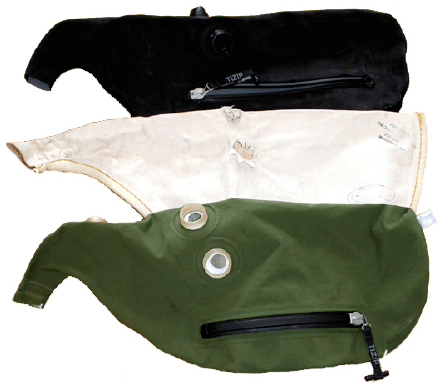 Robert Wallace writes: There are some basic rules to setting up your instrument that, if followed, will make your piping so much more enjoyable. In this series we will look at various aspects of this, beginning today with the pipe bag, the fundament of our instrument.
Robert Wallace writes: There are some basic rules to setting up your instrument that, if followed, will make your piping so much more enjoyable. In this series we will look at various aspects of this, beginning today with the pipe bag, the fundament of our instrument.
In addition to being the reservoir of air that allows us to take a breath and keep the required continuous sound going, the bag acts as a resonator for the instrument, enhancing its volume and harmonic overtones. It must be airtight of course: a leaking bag and it is impossible for us to play and enjoy our piping. Check your bag now by corking it up. Fill to its maximum and apply some serious pressure. If skin, check the seam in a basin of water. Also, check where it is tied in. Often this is at fault, not the bag, the chanter stock a regular villain of the piece. If leaking, re-seasoning may sort the problem. (This is also a good time to check your blowstick valve for air escape; give it a good listen).
Whilst the bag must keep the air in, it has an important role to play in controlling the H2O from our water-laden breath. Too much and reeds malfunction; they become unsteady and may eventually stop. Too little and they sound dry, thin and reedy.
Which brings me to the conundrum many pipers face these days: skin or synthetic?

Many of the top bands insist on their pipers playing skin as this gives them that extra fullness of sound the pipe major is looking for. Some top soloists too, insist on sheepskin or hide (this last usually in a dry country) and for the same reason. That said, many of our top players in the solo world achieve a sound every bit as good, and steadier, playing synthetic.
Moreover sheepskin can be very expensive. It does not last anything like as long as its synthetic brethren, and for hygiene reasons should be changed frequently. The late P/M Donald MacLeod was one who, in pre-synthetic days, insisted on an annual replacement, and, after a long season’s playing, I believe this to be good practice. All sorts of things can grow inside the bag, seasoning, damp, and warm air the perfect growing ground for nasty cocktails of evil bugs and bacteria. My old teacher in the Boys Brigade, Alex Ibell, would wash out sheepskin bags regularly using a mixture of Dettol disinfectant and warm water then leave the bag to dry before re-seasoning. The same washing out should be done fairly frequently if you opt for non-skin.
Once a sheepskin bag begins to seep seasoning it should be discarded. The loose pores will never allow you to achieve the level of ‘tightness’ you require.
One advantage of the skin bag is that it can be ‘made-to-measure’, a perfect fit for your body shape. Remember we are all different, and if you do go down the sheepskin or hide route it is worth taking time to
get this just right. Bear in mind that too many bags these days are cut too deep. We seldom see the old sausage-shaped ones which were so good at allowing freedom and relaxation on the top hand. These ‘deep cut’ bags can end up resting on the forearm, forcing an element of bag-induced pressure onto the part of the arm which should be reserved for critical finger control. The top of the arm is for the bag; the bottom for the finger. And don’t get into the habit of accommodating this bag shape failure. It can lead to all sorts of top hand fingering issues as you get older. The rule has to be comfort all the way.
I know of some pipers who have now opted for smaller synthetic bags for the reasons given above. The fashion for large bags was something that started back in the 80s, the idea being that the bigger the internal surface area of skin the more wet would be absorbed. With modern moisture control systems, this is not such an issue any more.
If buying a skin bag, make sure the stitching is neatly and evenly done, and that there are not too few to the inch or centimetre. Large stitching is time-saving for the maker but obviously looser and more prone to leakage. Feel the skin for consistency in texture. Good skins will be more or less the same gauge neck to rear seam.
One advantage of skin is that the blowstick stock can be tied in at an angle so that the mouthpiece sits perfectly on the lips. With synthetic this can be achieved with those ugly but effective adjustable blowsticks – but just as readily by attaching tying-in string to the bass drone and blowstick stocks and tightening until the perfect angle is achieved. It is all neatly covered by the bag cover and never seen. I have used this system for years.
For beginners and occasional players I would always recommend a synthetic bag. In lower grade bands, where steady blowing is more of an issue than getting a top-end sound, synthetic would be my choice too. Move up the ladder and sheepskin becomes a serious consideration. Whatever you opt for, do not follow fashion. Get a bag, moisture system and shape that works for you and stick with it, pipe major’s dictat permitting.
Before closing I should mention bag covers. These are very important for the piper. Without one your instrument looks tacky, undignified, naked. So never play in public with our noble instrument thus demeaned and denuded. Make sure it is the correct fit too. Too small and it can prevent the bag reaching its true girth and cause unsteadiness in blowing. If your bag tends to slip (the dreaded forearm coming into play) then sew or stick some of that non-slip rubber material they use on boats on both sides of the cover. If you have already done so, check now that it still works. It can become glossy after a time and lose its effectiveness. If so, replace. Corded material used for covers should always run horizontally for the same reason.
* Let us know what bag you play and why; comment below or email pipingpress@gmail.com


















